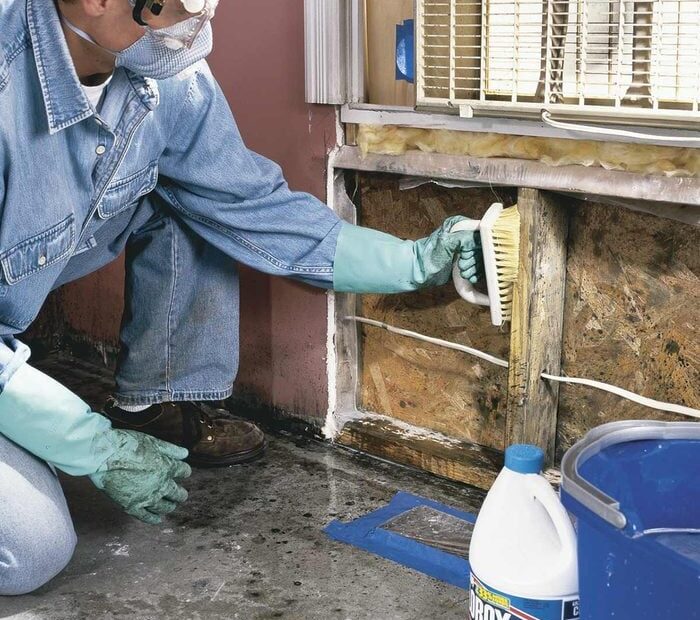Mold is found everywhere but you don’t want to see it in your house. There are things you can do to test for mold by including routine maintenance checks.
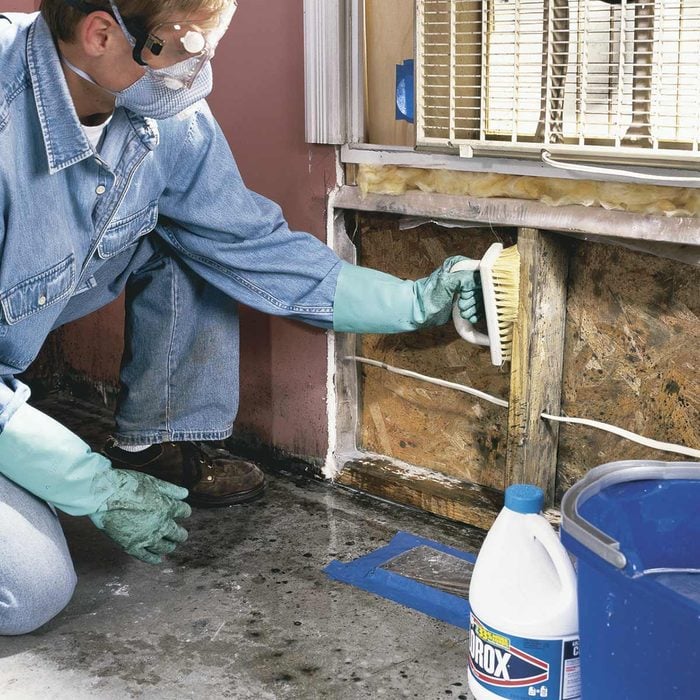
What does mold on typical house walls look like?
Mold is everywhere. It’s a type of fungus that grows from tiny spores in the air. It can grow almost anywhere that spores land and find moisture and a favored temperature range, between 40 and 100 degrees Farenheight. Typically every damp place in your home. You can easily spot the most visible type of mold, called mildew, which begins as tiny, usually black spots but often grows into larger colonies. It’s one of the easier ways how to tell if you have mold. It’s the black stuff you see in the grout lines in your shower, damp walls, and outdoors on the surfaces of deck boards and painted siding, especially in damp, shady areas. A mildewed surface is often difficult to distinguish from a dirty one. To test for mold and mildew and how tell if your house has mold, simply dab a few drops of household bleach on the blackened area. If it lightens after one to two minutes, you have mildew. If the area remains dark, you probably have dirt.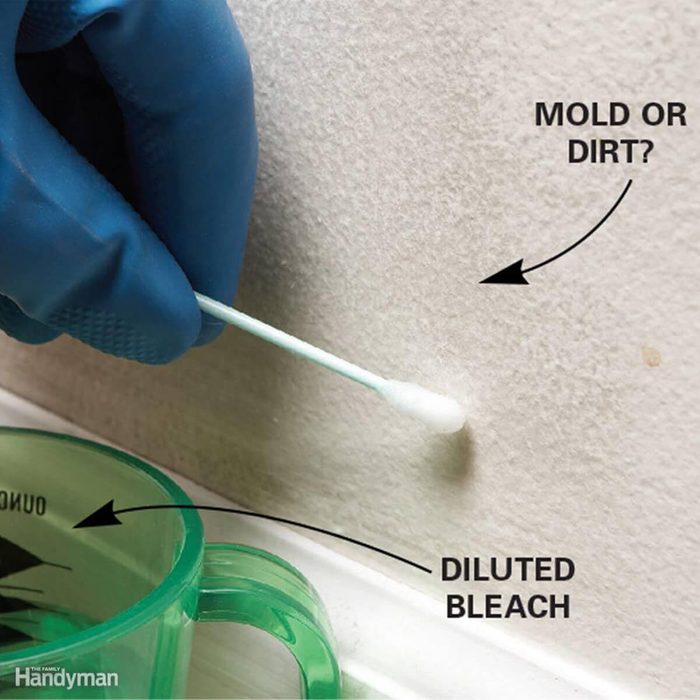
Is it Mold or Dirt?
Most mold is unmistakable, but sometimes small or largely hidden growths just make a surface look dirty. A quick test for mold can be done when you dip a swab in diluted bleach (1 part bleach, 16 parts water) and dab it on the wall. If the spot quickly lightens (or keeps coming back after cleaning), assume it’s mold. Mold test kits are available to detect the presence and identify the mold, but they won’t help determine the cause.
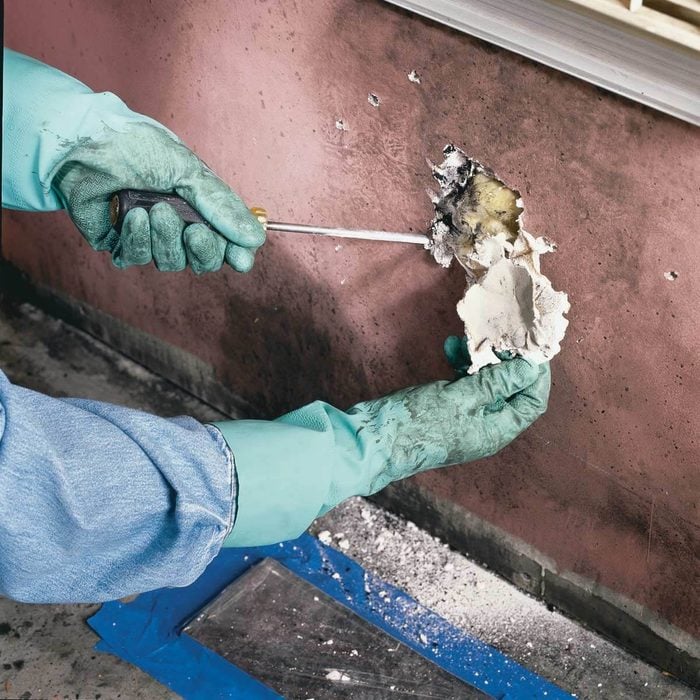
Probe the Area with a Screwdriver
Mildew is a surface type of mold that won’t damage your home’s structure. But other types of mold cause rot. To find mold in your house: probe the suspect area with a screwdriver or other sharp tool as a test for mold. If the wood is soft or crumbles, the fungi have taken hold and rot has begun.
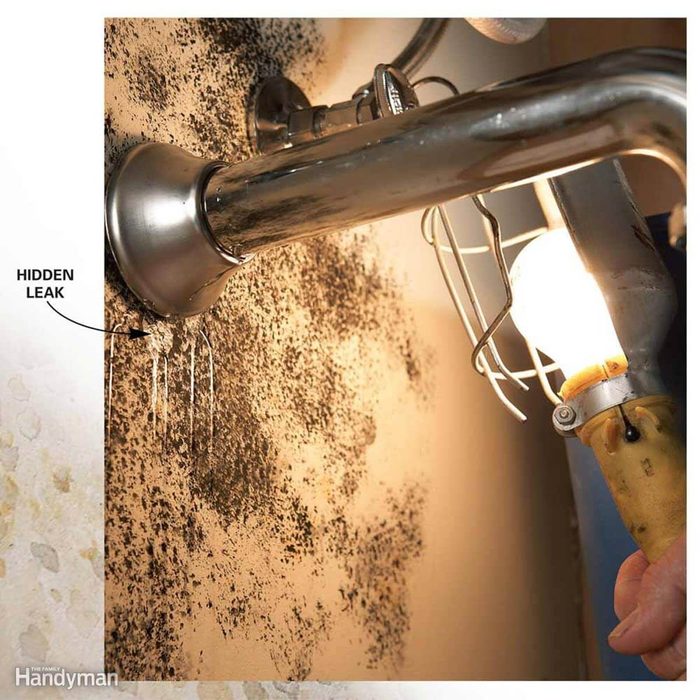
Check for Plumbing Leaks
Remember that water can travel in any direction—down, sideways, or even up when it wicks into absorbent material like drywall—so the actual leak may be some distance from the mold. Once the leak is found, fix it. This portable work light is perfect for scoping out problems inside cabinets and other hard-to-reach spaces. Learn how to clean black spots in the bathroom here. Is it safe to clean with bleach in the bathroom? Get the answer here.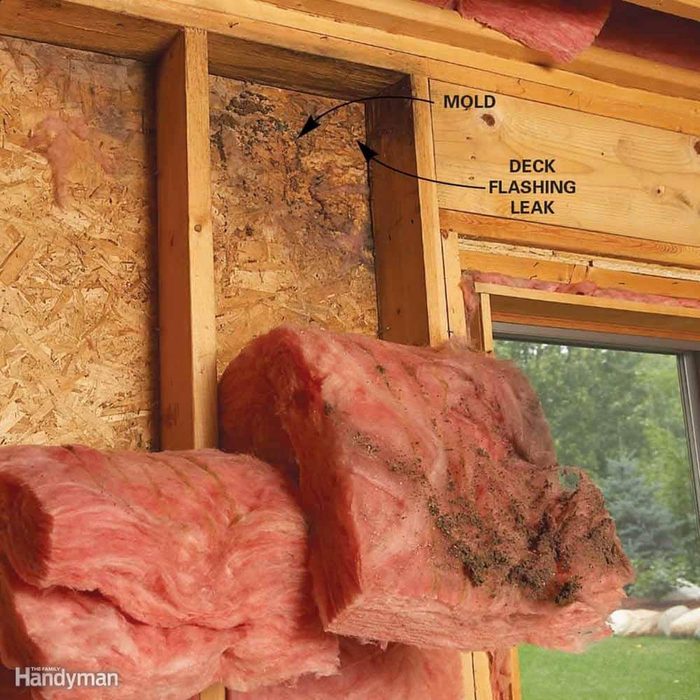
Look for Outside Leaks
If mold is growing on an exterior wall or ceiling, first look for a leak in the wall or roof as a test for mold. Measure from the moldy area to a reference point like a door, then find the spot on the other side of the wall or ceiling. Closely inspect nearby vents, roof flashing, decks, window wells, and anywhere wood is rotting. Look for ground sloping toward the house and downspouts emptying next to the wall. If the ground around the house gets too wet, moisture will wick into the foundation or slab and become persistently damp. Make sure you properly install flashing when you’re fixing the leak.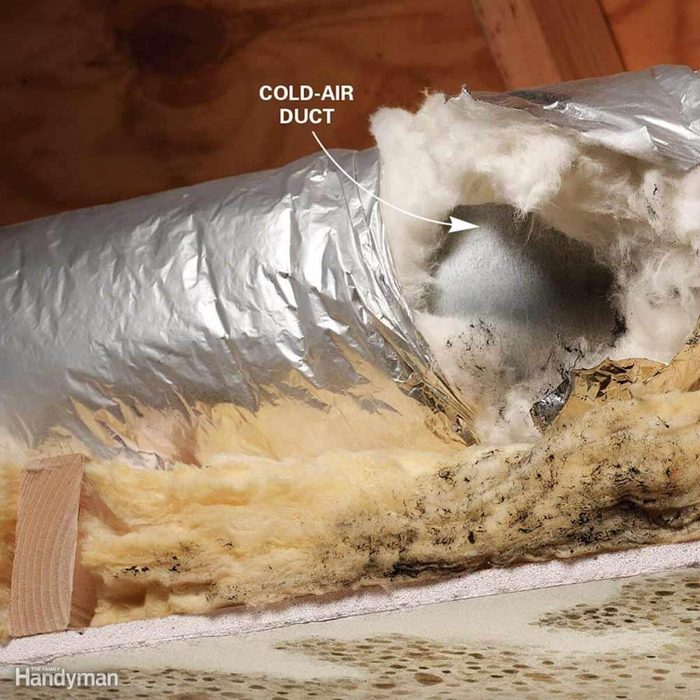
Inspect the Ductwork
If mold forms on the ceiling under a duct or register and there’s no sign of a roof leak, badly insulated ductwork may be the cause. Warm, moist air condenses and forms water on ducts carrying cold air through the attic or crawl space. The condensation is a sign that the duct is uninsulated or missing a vapor barrier. Eventually, the water saturates the insulation, and drywall and mold spores (which are everywhere) take root. In cold weather, the reverse happens. Moisture forms anywhere warm air escapes—for instance, at unsealed joints between duct sections. Inspect your ductwork as a test for mold.
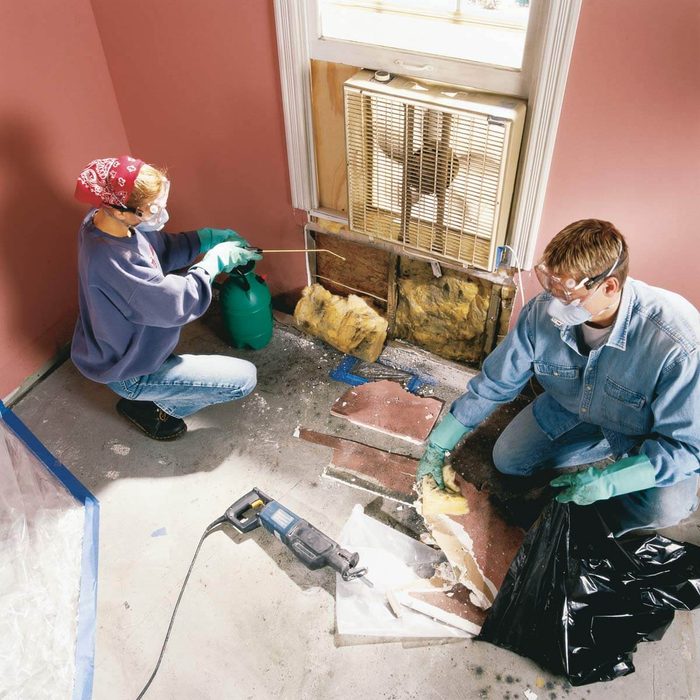
Testing the Mold
The Center for Disease Control does not recommend routine sampling for molds and it’s generally not necessary to identify the species of mold because it’s all got to get removed anyway. Testing can be expensive and no standards for judging an acceptable quantity for testing have been established.
Know the Differences Between Mildew and Mold
Though there are thousands of different types of mold and mildew, they all have two things in common: The first is that their mission on Earth is to digest the organic world around them. The second is that they all need moisture so their little digestive enzymes can go to work. There are differences between mold and mildew, but for our purposes, we can call the entire gang mold. Molds are neither plants nor animals. They’re microscopic organisms containing enzymes (responsible for digesting and decomposing) and spores (in charge of reproduction). Mold dwells within the fungi kingdom: a realm that includes mushrooms, yeast, and other seemingly unsavory characters. But the truth is, these decay organisms aren’t unsavory at all. Without them, toppled trees, dead animals, and fallen vegetables wouldn’t decompose. Our land would get piled higher and higher with dead stuff. We wouldn’t have foods and medicines like cheese and penicillin. The problems arise when mold starts chomping away at things we don’t want them to—affecting the look, smell, and structural integrity of your house
.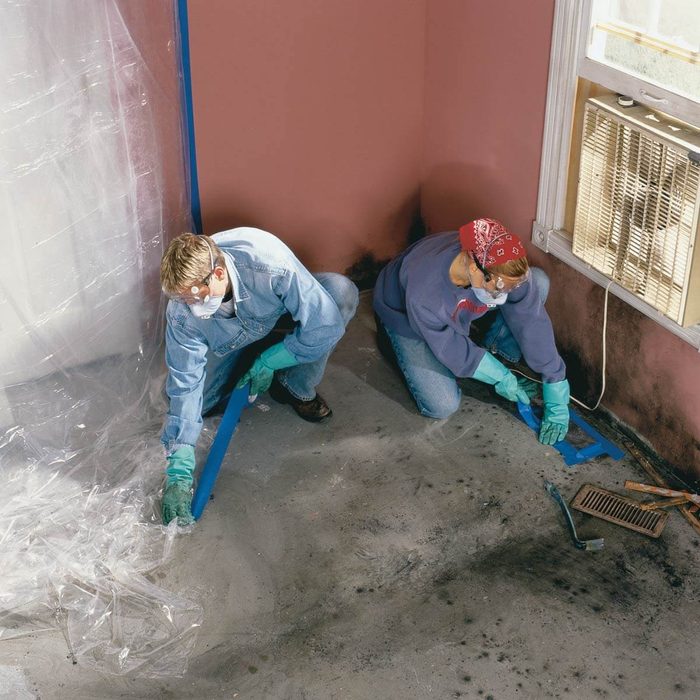
How to Remove Mold
If you have to remove mold concentrations or perform any mold removal covering more than a few square feet, where the musty odor is strong, or where you find extensive water damage, we recommend that you take special precautions. You want to not only avoid contaminating the rest of the house but also protect yourself from breathing high concentrations of spores and VOCs.
- Wear old clothes and shoes that you can launder or throw away after the cleanup work.
- Wear special N-95 or P-100 respirators, in addition to goggles and gloves.
- Set an old box fan or a cheap new one in a window to ventilate the room while working. Throw it out when you’re done cleaning because the spores are almost impossible to clean off. Tape plywood or cardboard around the window openings so the spores can’t blow back in.
- Wrap and tape moldy carpeting in 6-mil plastic, and double-bag mold-infested debris in garbage bags for disposal.
- To control airborne spores, moisten moldy areas with a garden sprayer while you work.
- Turn off your furnace and air conditioner and cover ducts and doors to contain spores.
- Keep your wet/dry vacuum outside when you vacuum.
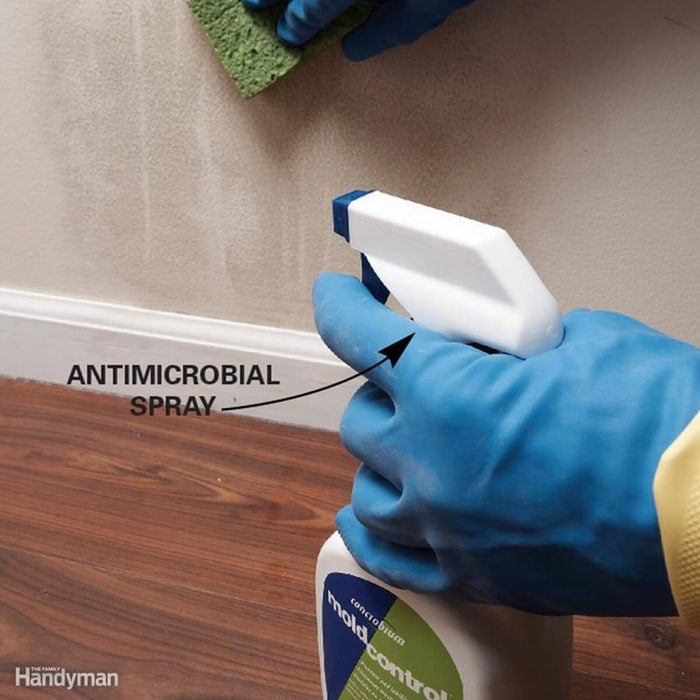
Use an Antimicrobial Spray
Once the moisture has been dried up, clean and spray the area with an antimicrobial treatment to prevent mold from coming back. In basements or other larger areas with musty odors, it may be more effective to fog the entire room. (Concrobium Mold Control is an antimicrobial treatment available at home centers and online that can be dispensed by spray or with a fogging machine.
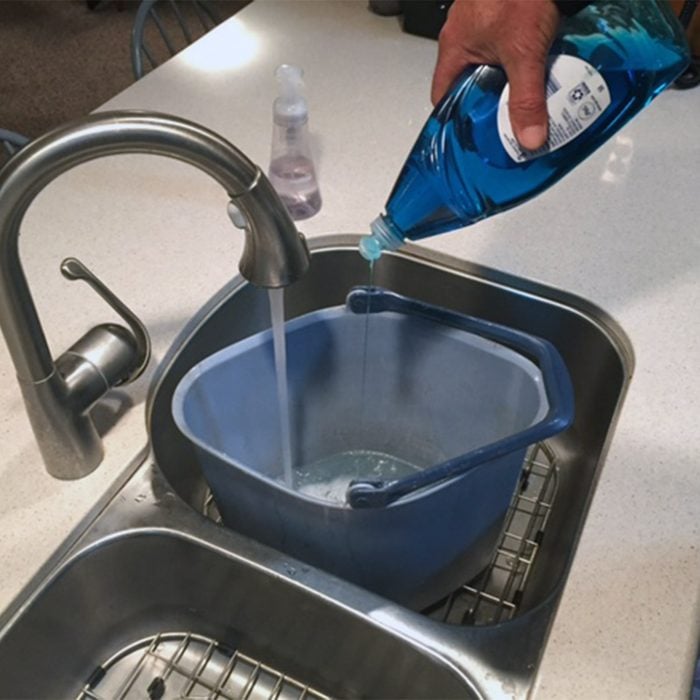
Use Soap and Water to Remove Mold
Removing mold is best done with soap and water because it has surfactants, which help to remove the mold. Though some say bleach and water can be used to remove mold, bleach doesn’t have the same properties as soap and water to remove mold.
